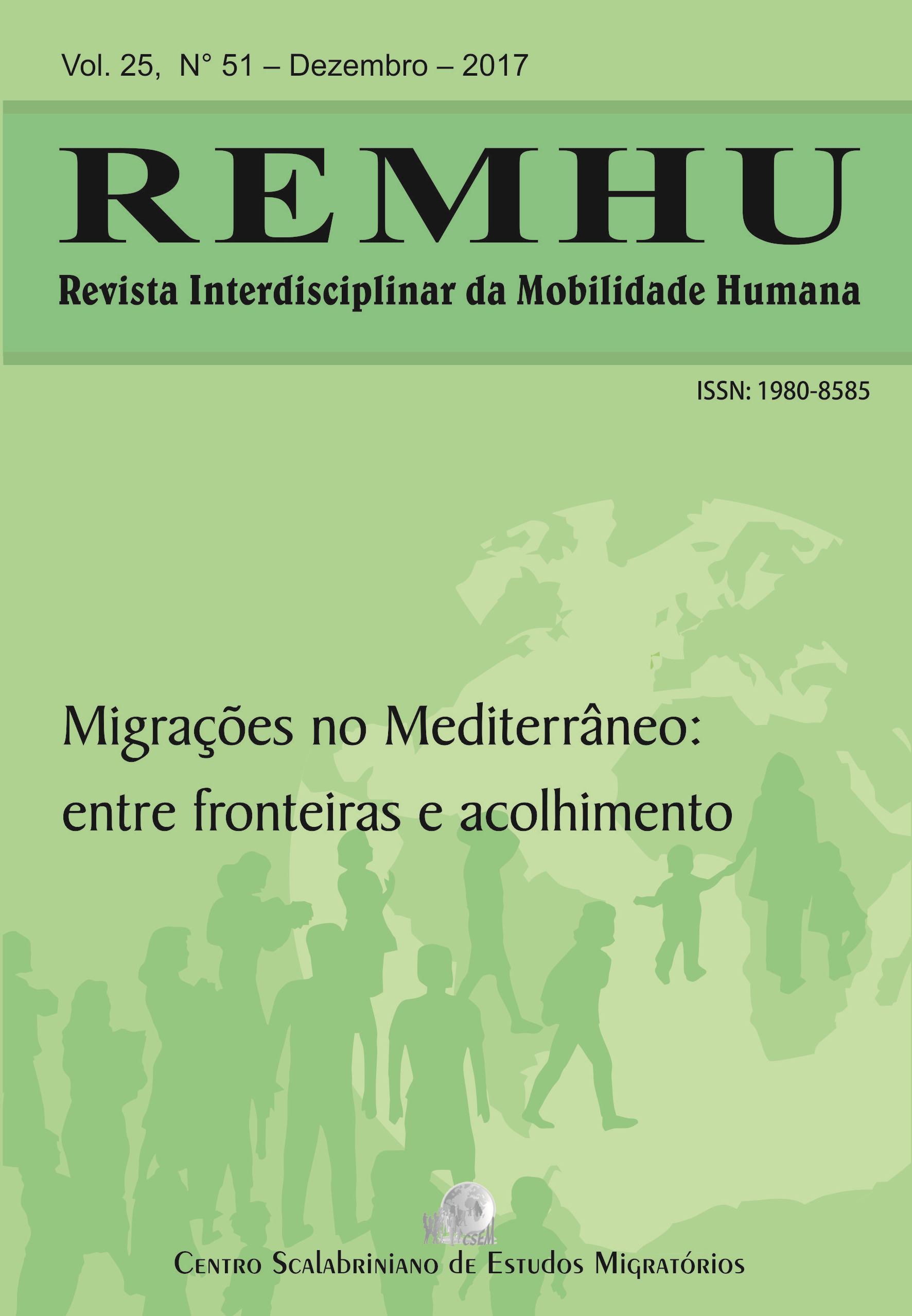The third way. Humanitarian corridors in peacetime as a (local) civil society response to a EU’s common failure
DOI:
https://doi.org/10.1590/1980-85852503880005105Parole chiave:
Humanitarian Corridor, Migration, Refugees, Innovative practiceAbstract
Migration has been and will continue to be one of the key issues for Europe in the coming decades. Fundamental developments such as economy, climate change, globalization of transport and communication, war and instability in the neighbouring regions, are all factors that continue to drive people to come to Europe, in search of shelter and a better life or to reunite with their families. In recent years, vulnerability of forced migrants has been exacerbated by worsening conflicts in their home country, which make repatriation less and less a viable option, and by mounting intolerance within local communities. A growing number of potential refugees attempts to escape transit countries to reach the European Union by embarking in dangerous journeys to cross the Mediterranean Sea and illegally enter the European Union. Within the European Union resettlement represents a 'durable solution' for vulnerable forced migrants alongside local integration and voluntary repatriation, a protection tool for potential people whose lives and liberty are at risk. In Italy, a group of institutions from civil society and the Italian Ministries of Foreign Affairs and of Interior signed a Protocol of Agreement for the establishment of Humanitarian Corridors to ensure the legal and safe resettlement of asylum seekers. Our article will show how these Humanitarian Corridors proved to be a successful multi-stakeholder engagement to support safe and legal pathways to protection as well as durable solutions for third country nationals in need of protection.
Dowloads
Pubblicato
Fascicolo
Sezione
Licenza
Gli autori mantengono i diritti sulla loro opera e cedono alla rivista il diritto di prima pubblicazione dell’opera, contemporaneamente licenziata sotto una Licença Creative Commons do tipo atribuição BY che permette ad altri di condividere l’opera indicando la paternità intellettuale e la prima pubblicazione su questa rivista.
Agli autori è consentito autoarchiviare i manoscritti accettati, pubblicarli su blog personali, archivi istituzionali e social media accademici, nonché pubblicarli sui propri social media personali, purché sia inclusa la citazione completa dalla versione originale della rivista.




